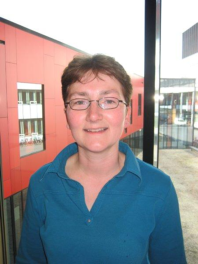Inorganic porous hollow fiber membranes with tunable small radial dimensions
Promotion date: 09.March 2012
Promotor: Prof.dr.ir. Arian Nijmeijer
Assistant promotor: Dr.ir. Nieck. E. Benes
| Porous stainless steel hollow fibers were developed with outer diameter of 1000-1500 µm. The morphology of hollow fibers of stainless steel is predominantly determined during the dry-wet spinning process and can be tuned by changing the spinning conditions and the composition of the mixture. The morphology is preserved upon sintering and shrinkage due to densification. The fibers combine high strength with a large nitrogen permeance. Hollow fibers with exceptionally small radial dimensions, down to 250 – 750 µm, were created. Viscous deformation of the ‘green fibers’ resulted in a substantial reduction of the outer diameter. Fibers of other inorganic materials were prepared, demonstrating the steps of the methods used are generic and versatile. A preparation methodology for high quality porous inorganic membranes was developed, with a large membrane surface area.
|
Do you recall a special moment during your experiments in your thesis project period?
Much to my surprise, I observed a reduction of three times in outer diameter of the stainless steel fibers after thermal treatment.
First I tried to figure out if somewhere in the procedure I made a mistake, as the extensive shrinkage was totally unexpected. Later on I understood something special had happened and I was able to understand the underlying physical phenomena. This allowed development of a generic approach for producing extremely thin hollow fibers consisting of a range of inorganic materials, with tailored morphology.
This result has important implications for applications in chemical processes involving high temperatures and aggressive chemical conditions.
Did you write scientific publications as a result of your work?
The Journal of Membrane Science (3 papers) and also Scripta Materialia (1 paper) published my findings.
In what way did you develop personally during your thesis project?
I came to be a PhD student in an extraordinary way. Working as a research assistant at Mesa+, not possessing a university master title, I gained experimental ideas along the way. After some time, this resulted in a PhD-project plan, which was strongly supported by my promoter professor Arian Nijmeijer.
My approach of being inspired by theory and use my experimental skills to design experiments systematically, resulted into the nice findings mentioned before. I think this approach is very fruitful: trying to be two steps beyond the conventional paths. When one notices changes doing so, it is an exciting challenge trying to find new crosslinks and insights in the processes actually taking place and building new theories from that.
Being free to set up my own experiments and lines of research, is what I like in the thesis project. It made performing experiments and research much more fun for me.
What are your future plans?
I am staying at the University of Twente, partly working as a laboratory manager and also working on research projects for company-subsidised projects. A research grant is submitted to STW, aimed at bringing the inorganic small fibers to commercial validation. The potential is there, that is for sure.
What, in your opinion, is important for Mesa+ to stay successful in future?
The instrumentation and equipment here meets all world standards. That’s very important. Also the link to industry and spin-off initiatives should remain visible for as broad an audience as possible. Although my research was not strictly aimed at nano-scale dimensions, I felt part of the Mesa+ community because of the innovative character of my research.

